What pickups are right for me?
One important thing to point out is that no pickup is objectively better than the other. The build quality may be somewhat objective in nature, but the tone, performance and what this does for your playing experience is completely up to you and no one else. Another thing worth mentioning is that your audience is rarely able to detect tonal differences like that of different pickups as an isolated factor, but instead hear the music that your fingers deliver. Therefore, the pickup of choice should be the one that gives you the response you like and makes you play your best, plain and simple. The different pickups found on .strandberg* guitars have been chosen to cover a certain range of sounds and give certain functionality to the guitar model in question. As we’re a company that aim to develop our products in accordance with player’s requests, we of course also choose pickups on basis of popular demand. It’s virtually impossible to satisfy everyone, but you get the idea.
With this in mind, there are a couple of things that are good to keep in mind when it comes to pickups for practical reasons.
- True single coil pickups hum – This is not a fault, but a consequence of design. The price for having a chiming and pristine single coil tone is that the construction itself act as an antenna for outside interference. The hum will be more or less pronounced depending on the situation, but it will be there. If you’re usually playing with a lot of distortion and/or reside in a noise inducing environment, you might have to make the choice to either accept the noise or exchange your pickup(s) for a hum cancelling type.
- True single coil pickups don’t always hum (?) – This is true for situations where more than one single coil is used at the same time. Maybe you’ve noticed that some pickup positions on some guitars have less hum despite the fact that single coil pickups are involved, while using the same pickups separately still hums. To understand this, one must be familiar with the way a common humbucking pickup works. Whenever two coils that have opposite magnet polarity and the wire wound in opposite directions are used at the same time, the hum will be bucked out. It is therefore possible to have several pickup positions that involves single coils and still have hum cancellation. The same principle applies to split humbuckers as long as the laws of physics are considered. This is the reason that all pickup positions on a .strandberg* Fusion and the middle positions of a Plini model are hum cancelling despite the fact that single coils and split humbuckers are involved. Just don’t expect a true single coil or split humbucker used by itself not to hum, because it will.
- A split humbucker rarely sounds like a classic single coil – Because it’s not. A common strat or tele style single coil pickup is not merely half a humbucker but is technically different in many ways. They usually employ rod magnets where a split humbucker uses a bar magnet. It also takes a humbucker with a fairly hot wind to produce a full-bodied single coil tone when split as the wind of only one coil will be operational. A common strat style single coil from the 1960s usually measures somewhere around 6,3kOhm in DC-resistance and this means that a full humbucker would have to measure about double this (with the same wire of course) to be able to have a fighting chance to produce a similar tone when split. This would be one of the reasons why lower output vintage humbucker often have problems producing a satisfying tone in single coil mode.
- The sound of a pickup is the combination of several things – A particular pickup doesn’t sound the same way in all guitars, with all amps and with all playing techniques. It is just one piece of the puzzle. A mellow sounding pickup mounted on a bright sounding guitar might not sound so mellow. A bright sounding pickup played softly might not sound so bright. The pickup should be chosen based on the sound that it will create in combination with your hands and your other gear.
Ok, but how can I know if a particular pickup is the right choice in my situation? The short answer is “you can’t” but giving some thought to your particular situation will surely promote a more conscious choice. What is my playing style like? What acoustic qualities does the intended guitar have? What amps and effects am I going to use it with? Do I regularly run into the same problems that another choice of pickups might be able to solve? Do I have problems with noise? Do I want the tightest possible response, or do I desire a fat and singing tone? Do I need many different sounds from one guitar or just the one perfect sound? One pickup being superior to another in all situations is unlikely true if not even impossible and you have to think hard about what you want it to do. Let’s look at some examples and see if we can get some guidance from technical information.
- Suhr SSH+ humbucker (as found in the bridge position of .strandberg* Original, Prog and Fusion series guitars): Alnico 5 magnet equipped, wired with 44AWG wire to approximately 17kOhm in DC-resistance. That’s about all we know at this point and there will be no way of predicting its exact behavior without more information or playing it, but let’s try. Most Alnico 5 magnets have a strong magnetic field, are high in output with extended lows and highs. Such a high DC-resistance with a thin gauge wire implies a higher than average output with the suspicion of a pronounced midrange and a low resonance frequency. We could therefore expect a lot of drive, fast note tracking and less sustain (more string pull) on behalf of the magnet and a midrange concentrated vocal tone with less lively overtones and strong output from the coils. This would be a good recipe for control and a highly defined tone in hi-gain situations, especially in a light guitar with bright acoustic qualities.
- Suhr V60LP single coil (as found in the middle position of .strandberg* Fusion series guitars): Alnico 5 equipped, wired with 42AWG wire to approximately 6,4kOhm in DC-resistance. These numbers fit the description of some of the most sought-after single coil pickups of the 1960s with their bright and clear, but still bold character. Strong magnets (rod magnets) in combination with a medium strong wind using a thick gauge wire suggests strong attack, medium to slightly higher vintage output and emphasis on bass and treble frequencies rather than the midrange. This is a good recipe for delivering pristine clean sounds with an edge, but perhaps not the ideal choice for heavy distortion as the tone may get noticeably bright. Again, this is highly dependent on the acoustic timbre of the guitar itself as well as other parts of the signal chain.
These are of course just two examples out of thousands on thousands of other pickups available on the market. One must also realize that one pickup having “more midrange” doesn’t mean that it will sound like another pickup with “more midrange”. Depending on where in the midrange frequency span that the pickup concentrates its energy, the character may be completely different. A pronounced lower midrange is often perceived as fat/guttural, while a pronounced higher midrange is often found to give nasal qualities. These kinds of differences can be observed in the case of bass and treble frequencies as well.
Even with all these limitations in analysis, there are some combination of features that will have a hard time producing certain results. As a stronger coil wind will most always cause subdued treble frequencies, such should not be combined with a weak magnet if high output and clear treble is requested. For example, if a humbucker is wound to 18 kOhm (likely with a thin gauge wire) in DC-resistance and come equipped with an Alnico 2 magnet, it will likely be fairly strong in output on account of the coils and also have weak treble on account of both the coils and the magnet. What would the difference be if the magnet was instead a Ceramic one, you might ask? Well, the output would increase and the pickup would regain some treble/bass and the overall response would be tighter and stiffer with less sustain. Is that good or bad? It depends on the situation.
If a humbucker is wound to 7,3 kOhm (likely with a thick gauge wire) and come equipped with an Alnico 5 magnet, it will probably be low/medium in output on account of the combination of wind and magnet and also have a bright tone on account of the same. What would happen if the magnet was instead an Alnico 2? The output would decrease, there would be less treble, more midrange and more sustain. Is this a good thing? It depends…
Tips and tricks 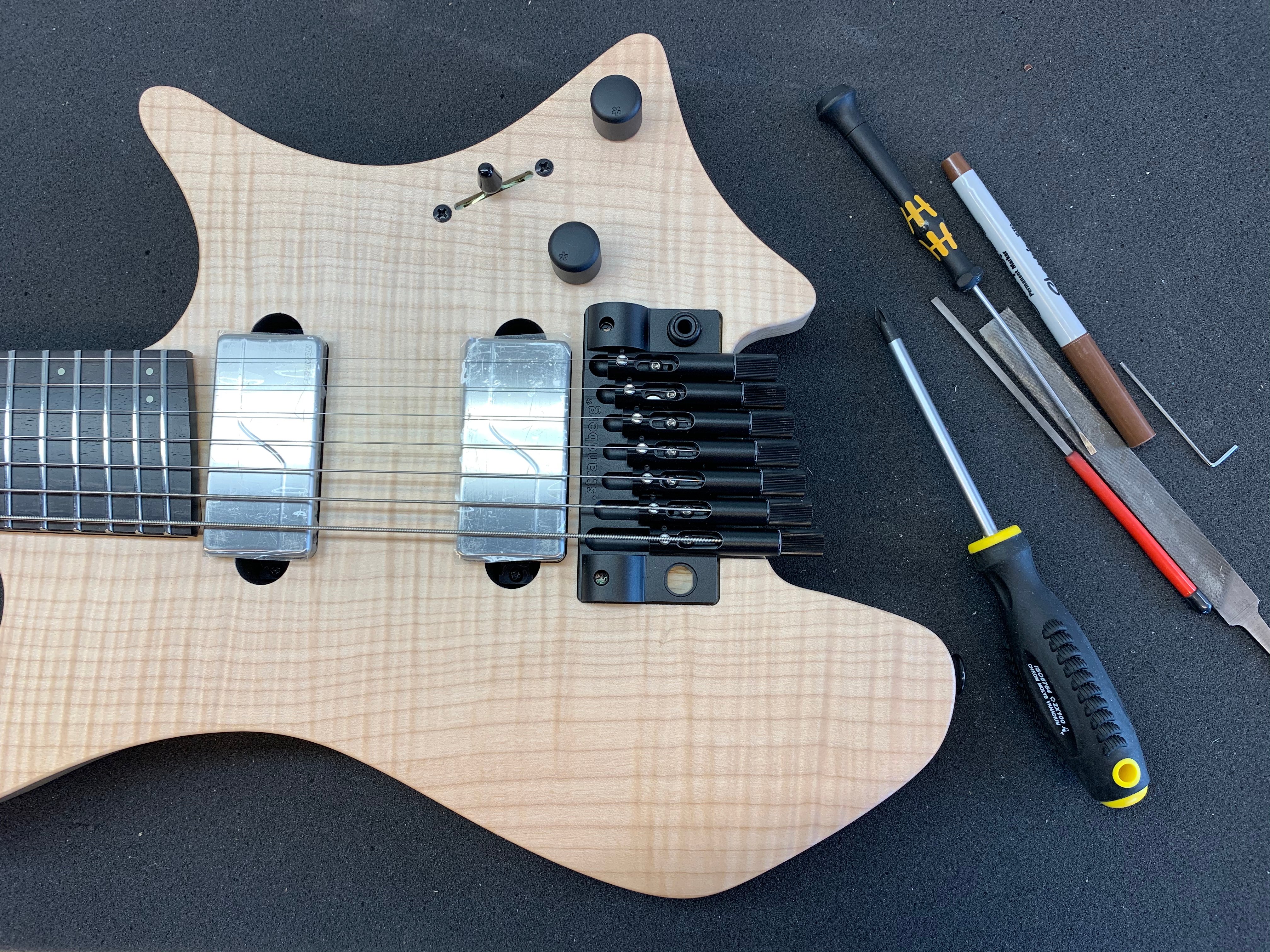
That was some heavy reading and you might be tired of technical aspects of pickups by the time you get here. No one would blame you. To round of this article about pickups, we will take a look at a couple of things that you can do to alter the performance of your pickups without changing them out. Perhaps a change of pickups is the only way of getting your perfect tone, but some less drastic measures could also be considered. Some of these things alters sonic character and some address problems that may occur in use under certain circumstances.
- Magnet change: This might sound drastic but changing the magnet in certain pickup types is easier than it sounds and can drastically change their tone without spending a lot of money. In the case of single coil pickups with rod magnets, this is not an easy task, but with most traditional humbuckers the magnet can be changed without much hazzle. Just buy a couple of different magnets (of the correct size, please!) and get experimental. There are many interesting discoveries to be made and the internet is full of information to guide you through the procedure.
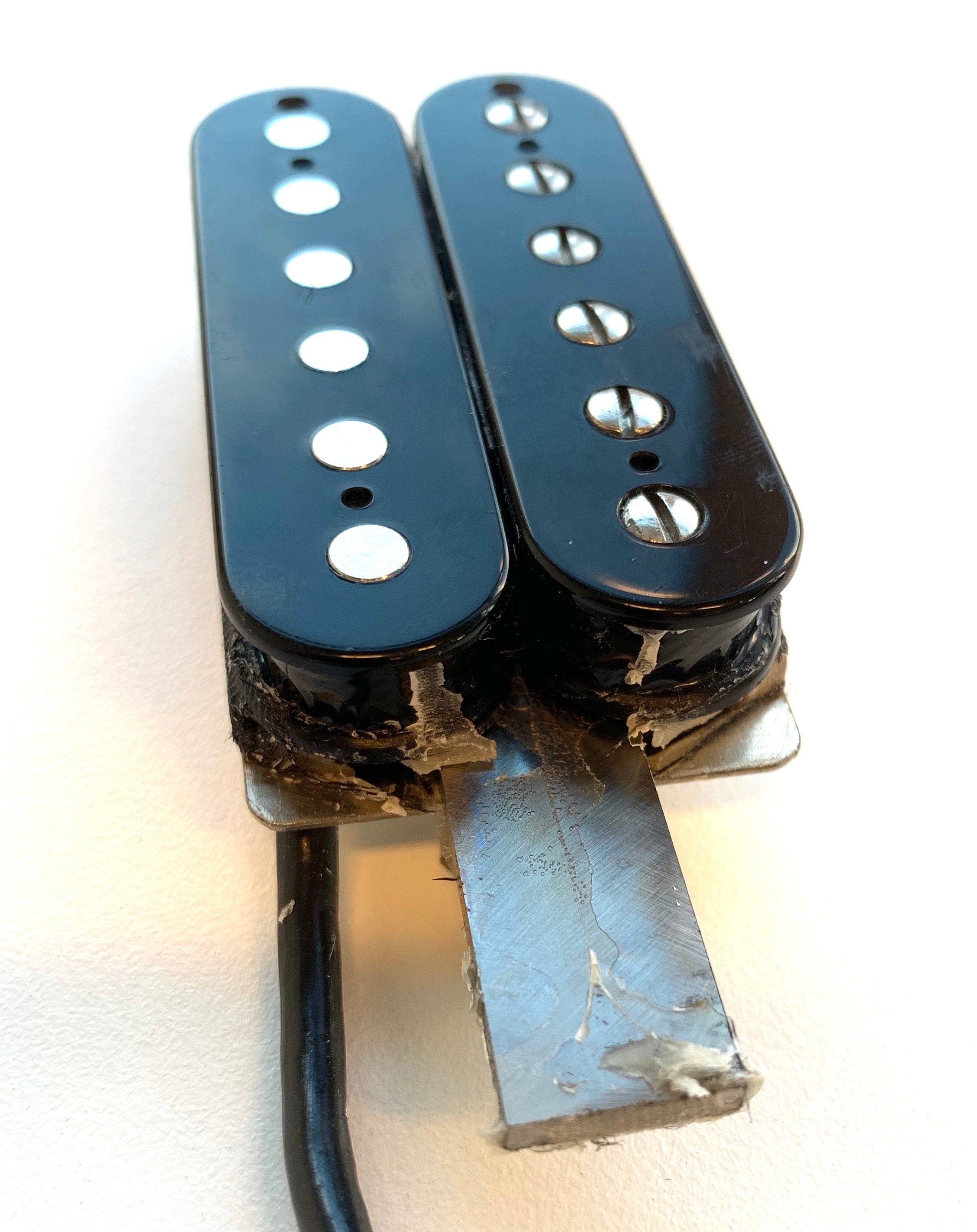 A humbucking pickup with the magnet sticking out.
A humbucking pickup with the magnet sticking out.
- Pickup height: The distance of the pickup in relation to the strings will affect the tone as the magnetic field will not be disturbed in the same way when you play. Typically, the tone will be clearer and the sustain longer if the pickup is moved away from the strings. If you want higher output and more bass, move the pickup closer to the strings. Please just take care not to adjust the pickups to close to the strings or it might cause the following phenomenon.
- Magnet pull: Do you remember the talk about magnet strength affecting sustain as mentioned earlier? A strong magnetic field may cause other things as well, including pulling the strings out of tune. Really, out of tune? Yes, some magnets are fully capable of pulling hard enough on the strings to alter their pitch to a point where the whole guitar will sound out of tune no matter how well you tune it. Before you start adjusting intonation or smash the guitar in a burst of frustration, try backing your pickups away from the strings. The problem is most common with powerful humbuckers and true single coil pickups with strong magnets.
- Changing potentiometers: All resistive components found inside guitars will load the pickups down and therefore decrease treble response. If your pickups sound too harsh in the high frequencies and you’re using 500K pots, change them out for 250K pots and see what happens. If your pickups sound dull and you’re using 250K pots, try changing them out for 500K or 1Meg pots and see what happens. Even though 500K pots are commonly used for humbuckers and 250K pots for single coils, there’s no objective truth as to what value pots should be used were and you may prefer something other than standard.
- Change other things rather than your pickups: No pickups will ever make up for all other things being wrong or less suited to the situation. Maybe you should use another set of strings or maybe your amp simply isn’t capable of delivering distortion with your preferred tightness. Perhaps the output of your pickups isn’t too low, but you need to work on your playing technique. High quality guitar pickups aren’t cheap and you’re doing yourself a grand disservice by not contemplating all aspects of tone creation before attempting to buy your way forward.
- Change your pickups: Yes, that is correct. If you’re fairly certain all other things have been covered and you’re still unhappy with your tone, of course you should change your pickups. It’s not even that hard to do yourself if you’re prepared to learn. Just acquire some decent soldering equipment and give it a try. Chances are that you’ll find it a lot easier than expected.
That’s all for this time a please come back for the next part of this electronics extravaganza. We will then discuss the rest of the components found inside .strandberg* guitars to find out what they do and what they don’t do. Until then, happy pickup day, everyone!
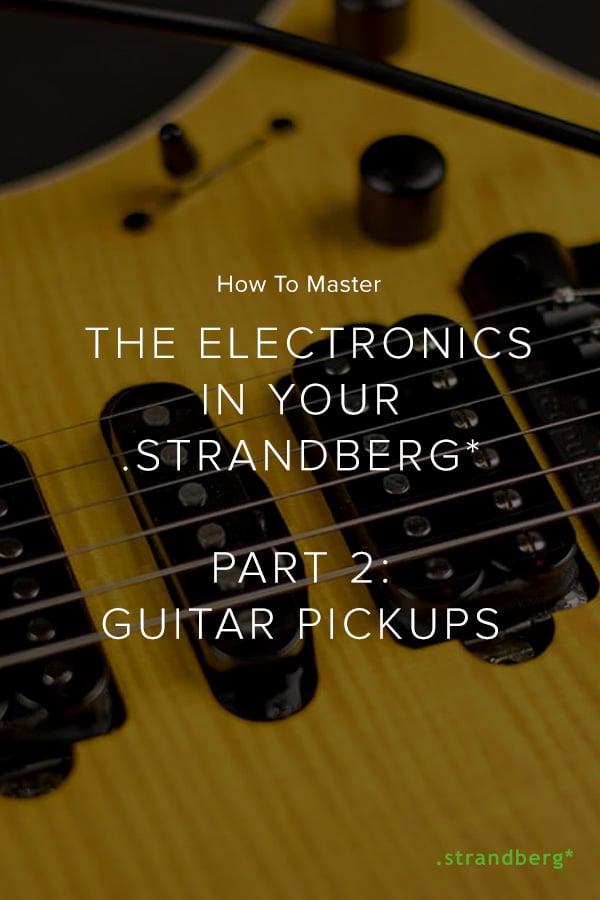
Pin this image to save this article.












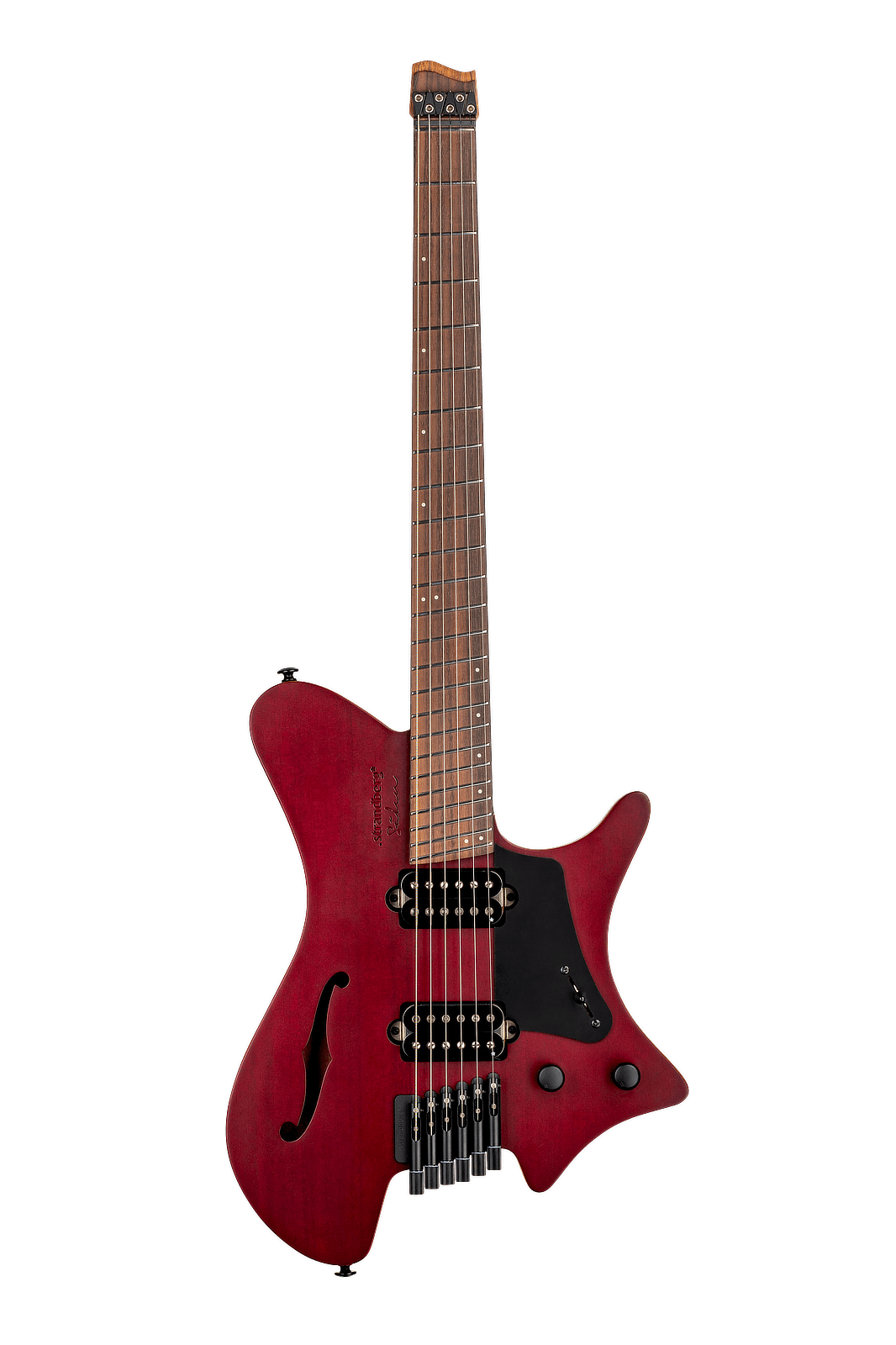
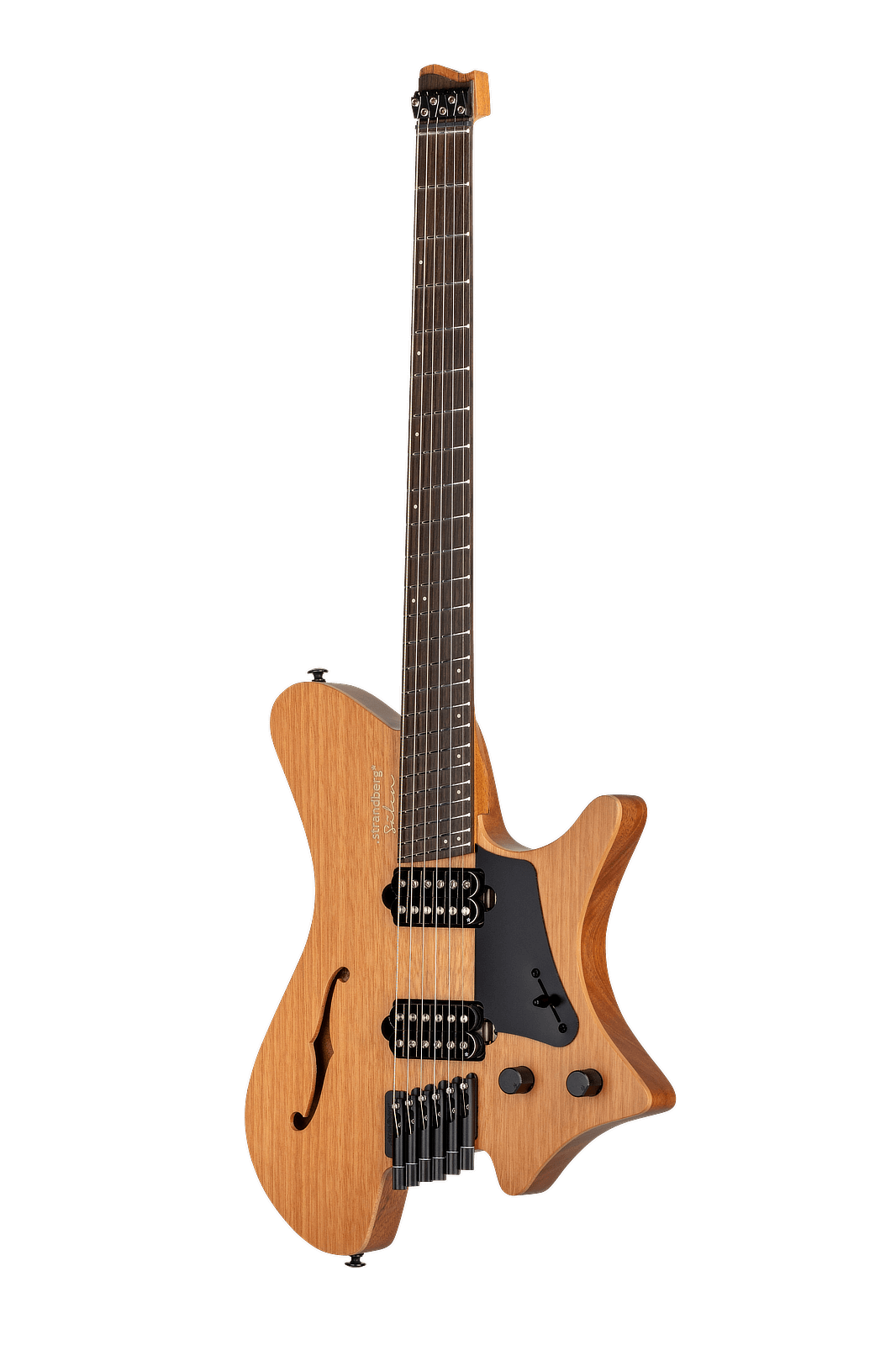
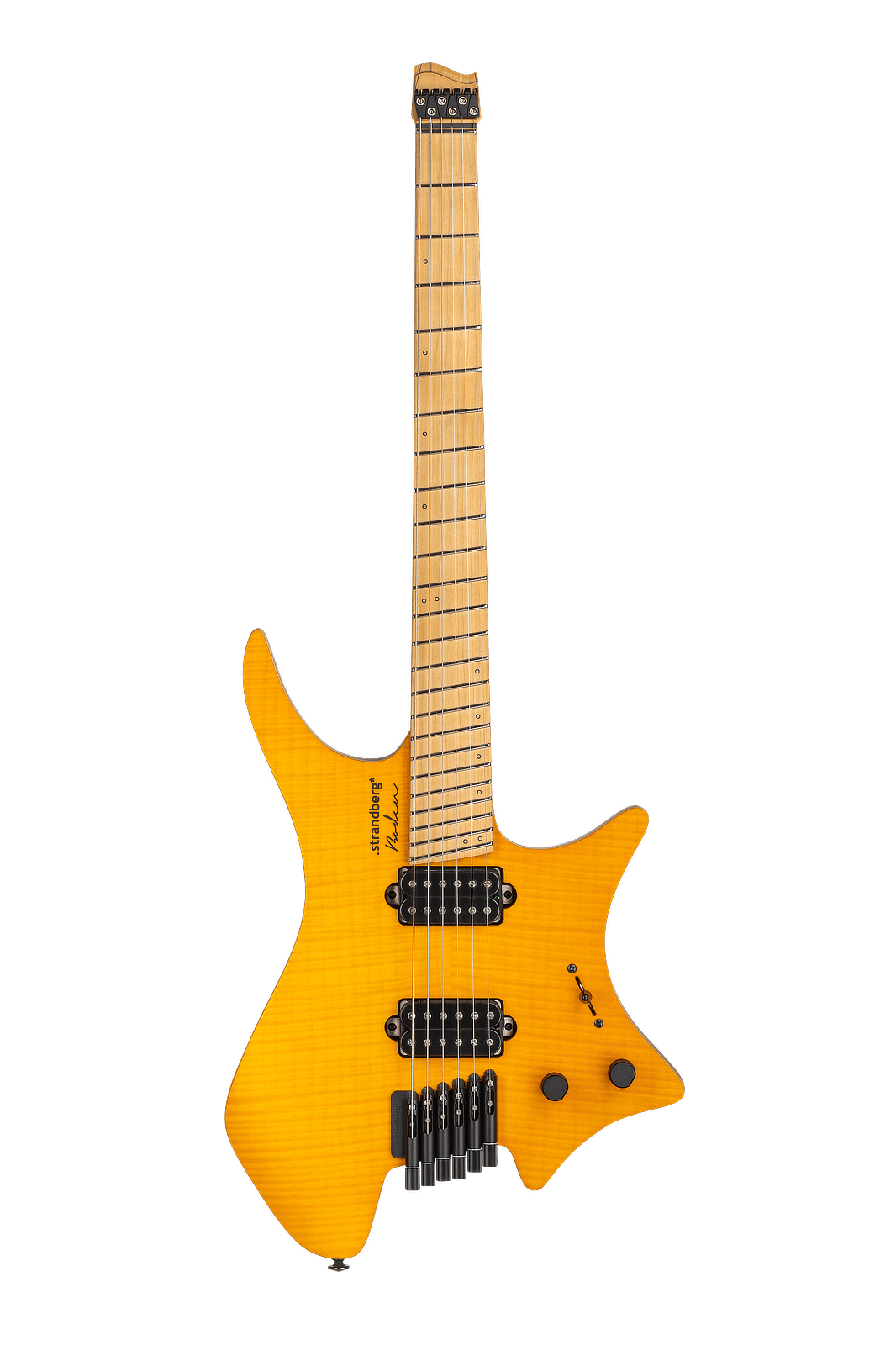

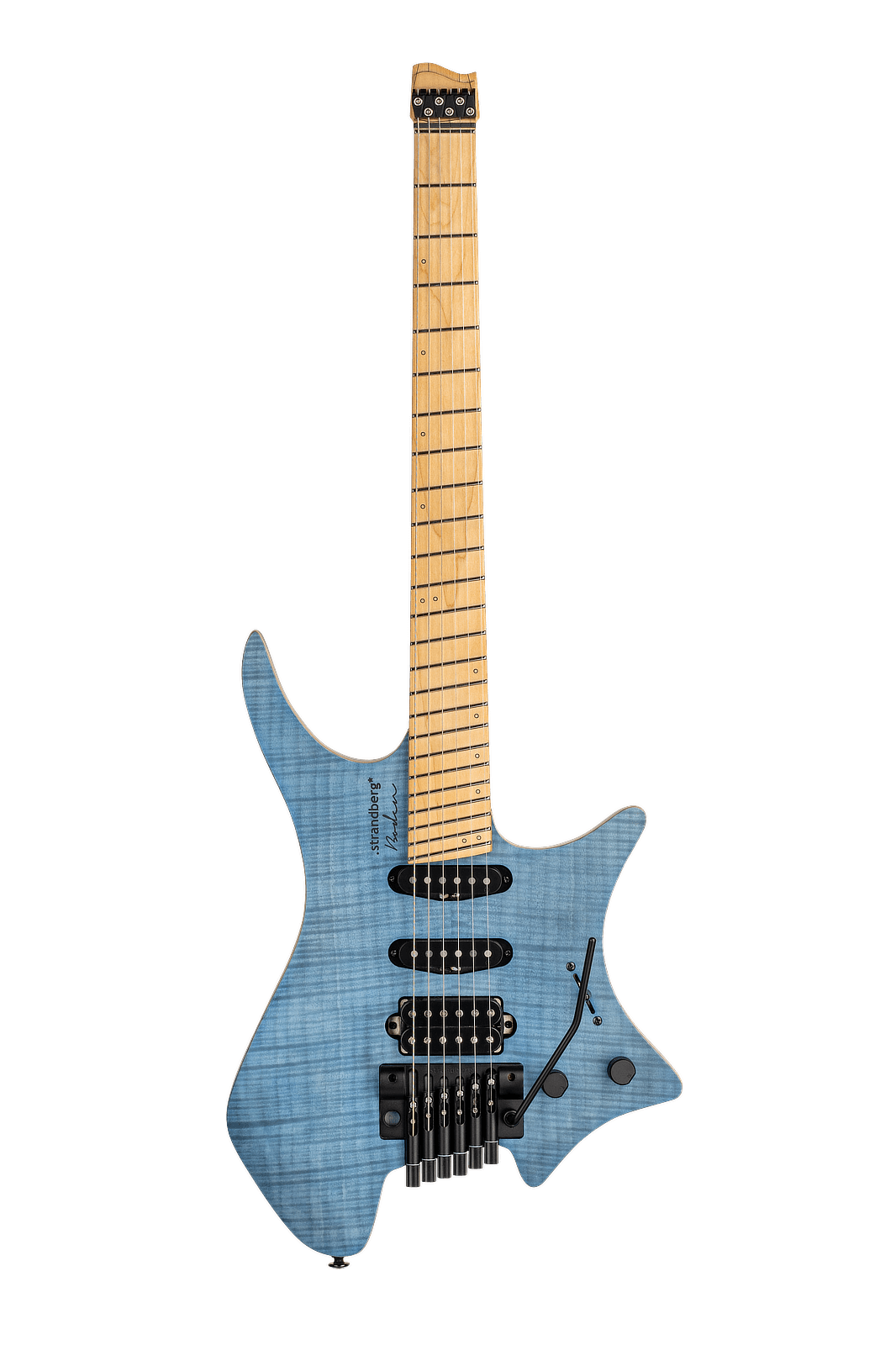
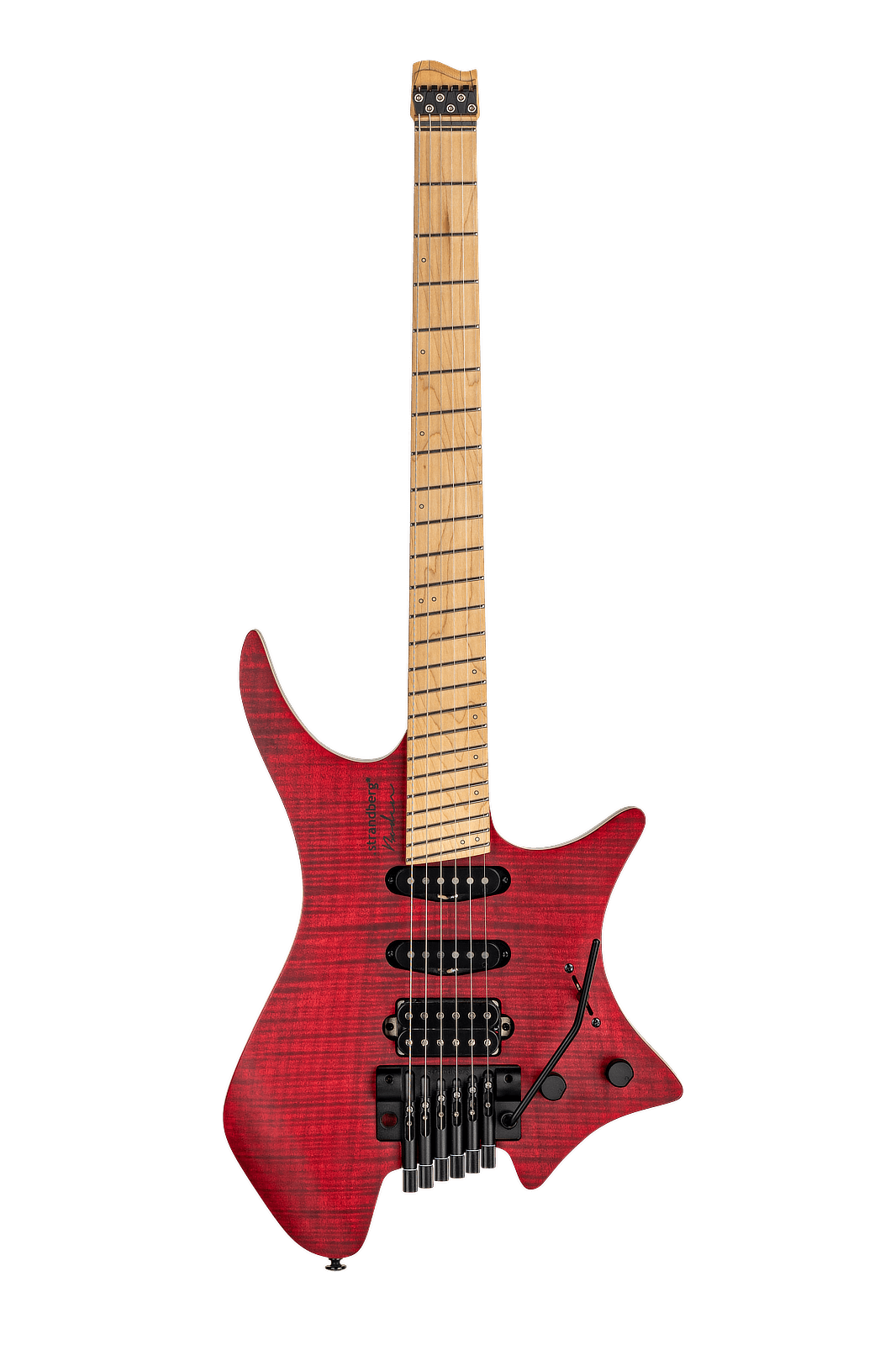
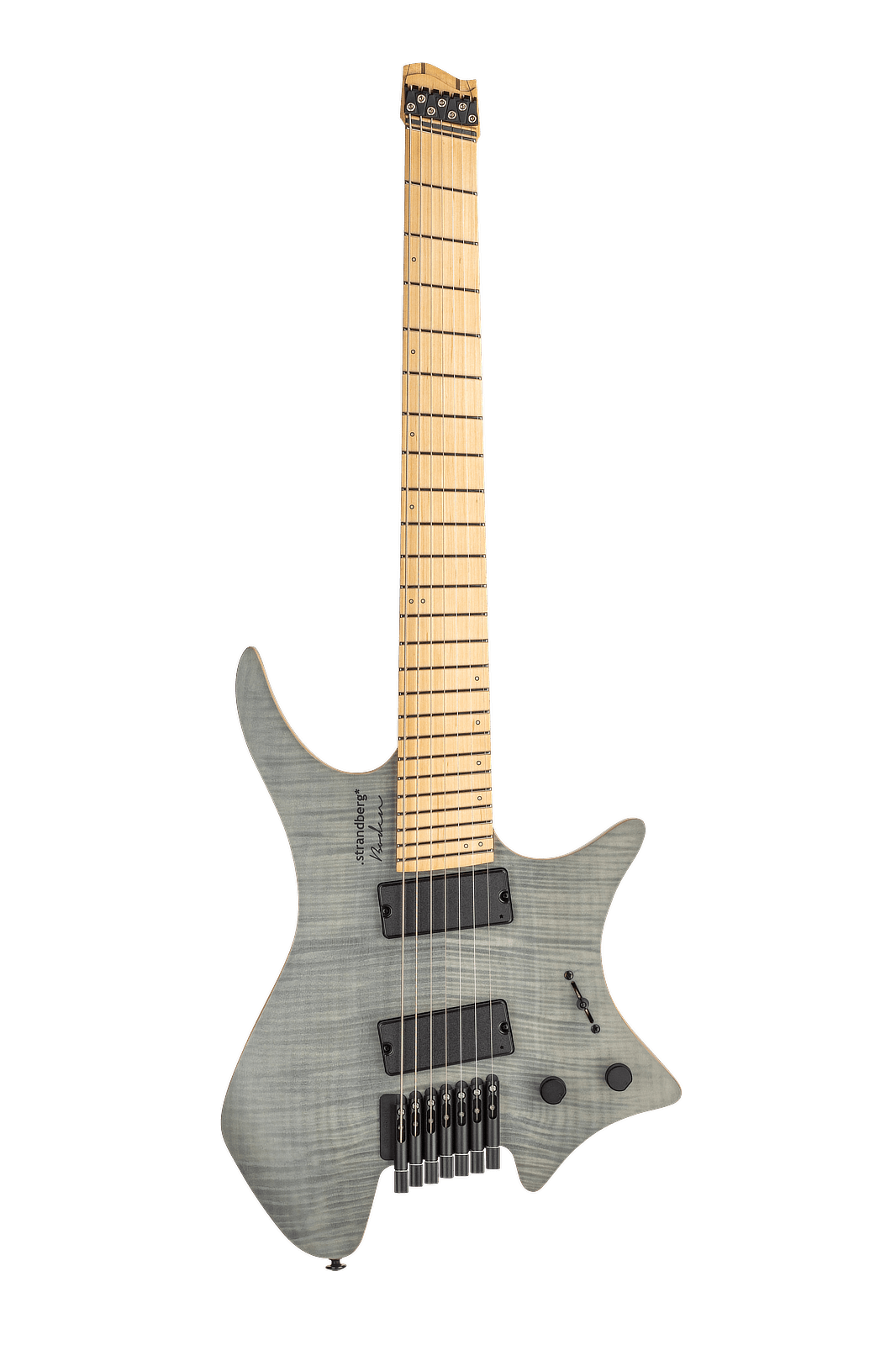
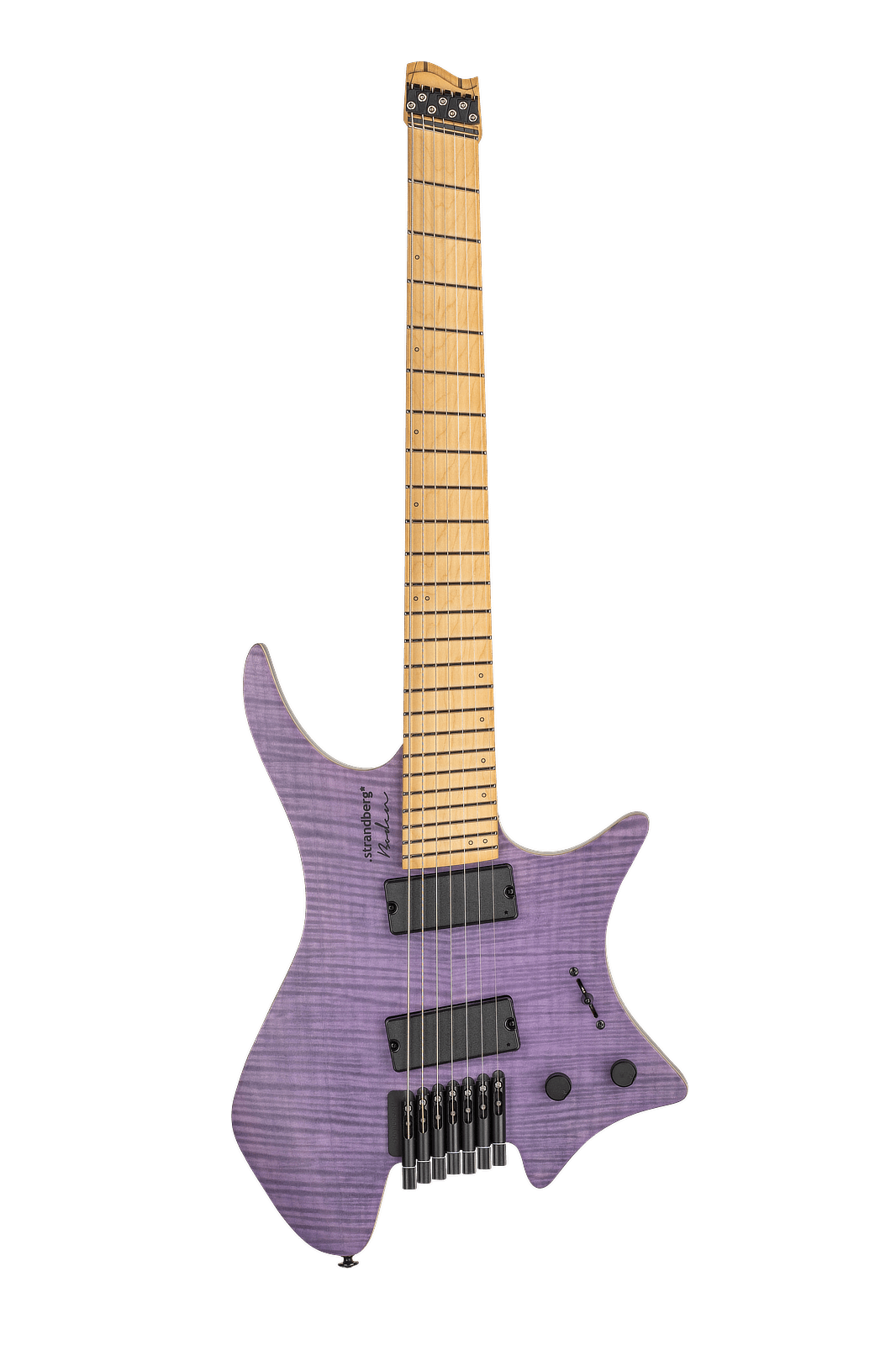
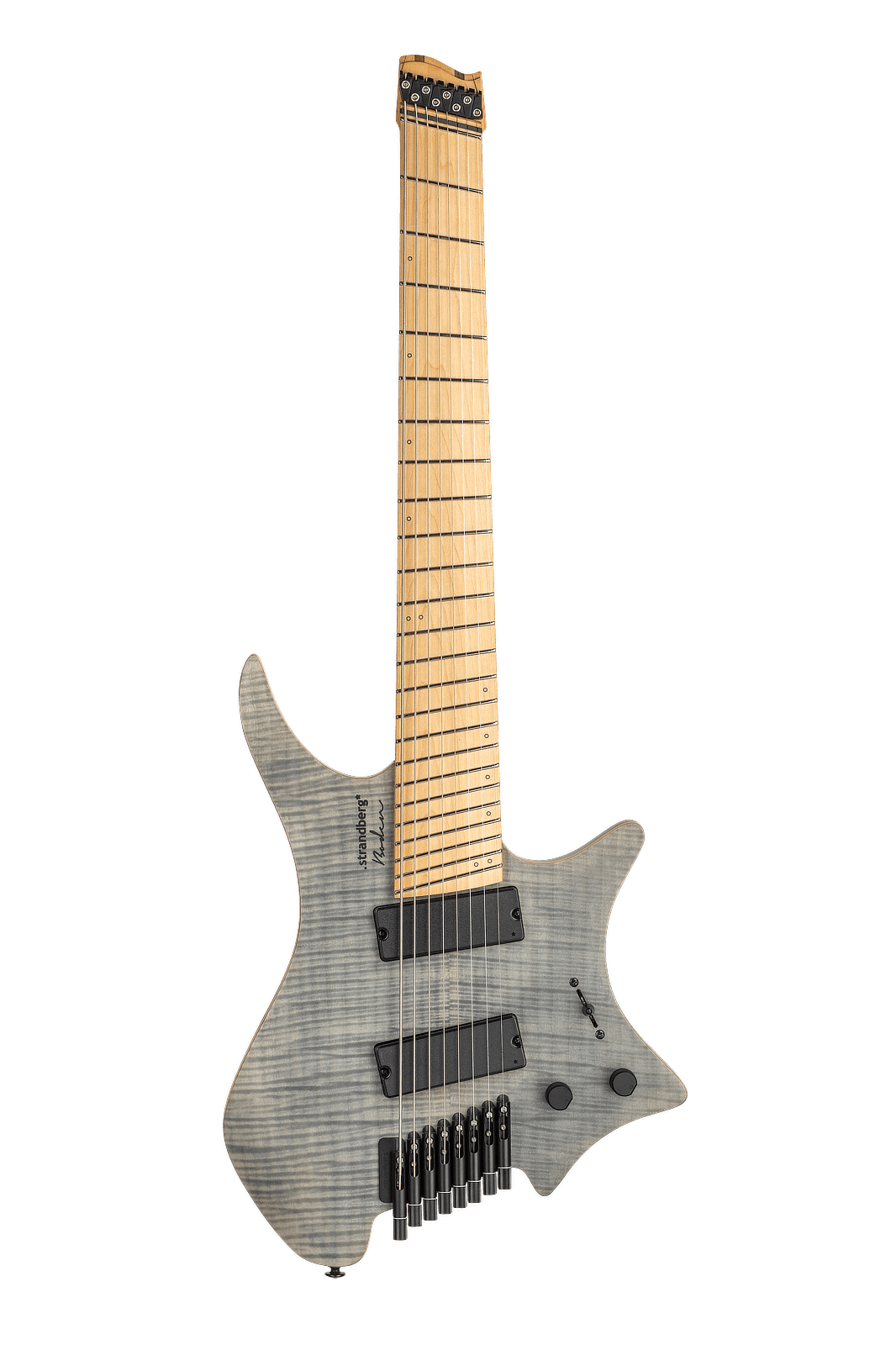
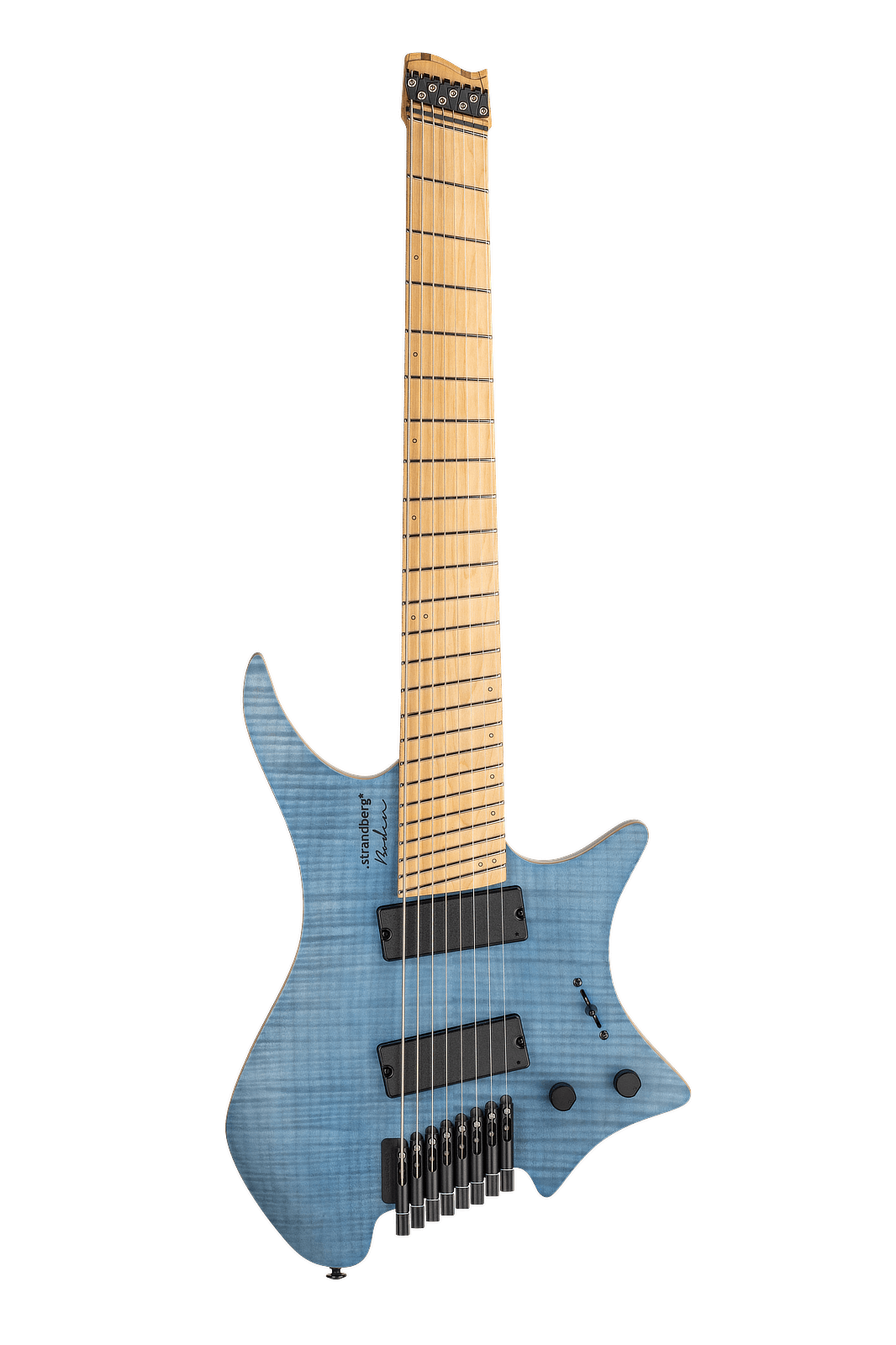


Share this: